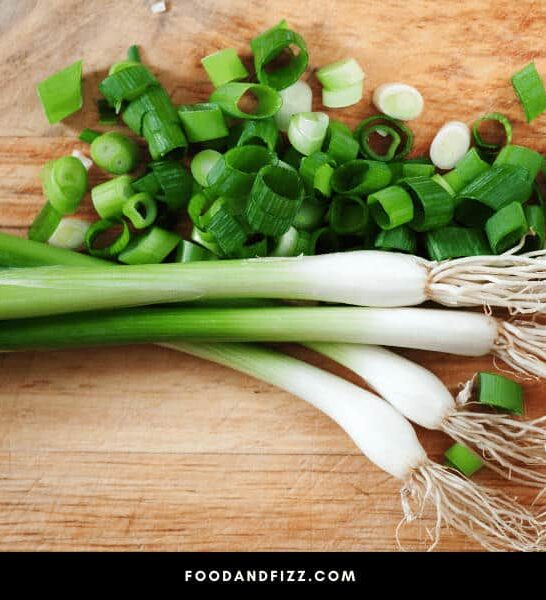If you love green onions, you may have come across slimy ones. The slime is not a sure indication that the onion is bad. It is normal to expect special gels from green plants like spring onions.
Is It Safe To Eat Slimy Green Onions?
It is safe to eat slimy green onions. However, you need to confirm that the plant is not harmful by checking for other symptoms. The slimy material can indicate a rotten onion, but only when accompanied by other symptoms. It is common for people to associate slime with inedible materials, though it is not the case with green onions.

It only becomes a health concern if it has a bacterial origin and is a sign of spoilage. A living green plant can have slime without being sick, and you should read on to learn more.
What Makes Green Onions Slimy?
The slime found in some green onions is a naturally produced fluid and is as edible as the other parts of the plant. It is most common in algae and other plants, including scallions and hyacinth greens.
Slimy green onions are not common in most parts of the world, and not many have observed them. However, you can observe the sliminess when cooking after mashing its dry leaves. Mashing the leaves makes them feel slimy.
Several plants seem to store energy and water by producing slime. It can also be a valid reason why there are slimy green onions, as most of the time, the slime shows up after watering.
In some instances, the slime could be a result of bacteria. Eating slimy green onions with bacterial-origin slime is harmful to your health. You must know how to differentiate between a good green onion and a bad one.
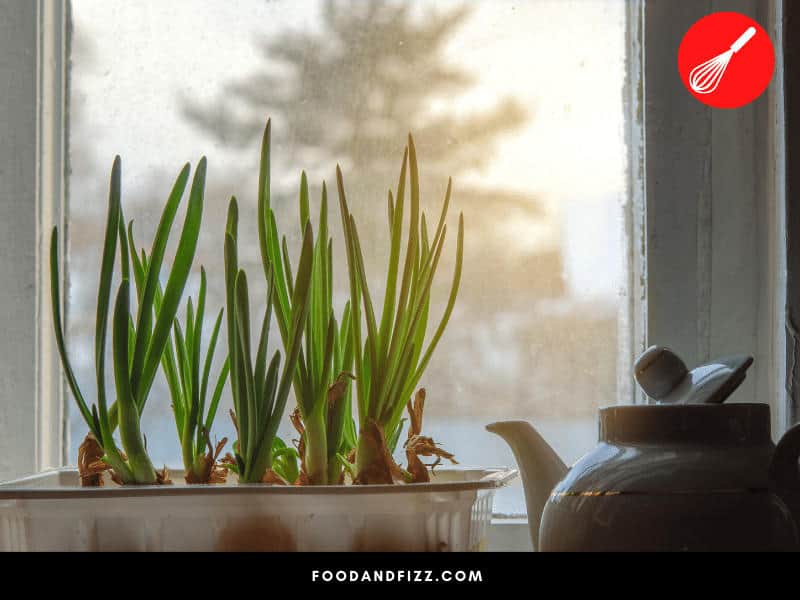
How Can You Tell If Your Green Onions are Bad?
1. Check its Leaves
One practical approach to identifying rotten green onions is checking their leaves. The leaves of a healthy plant should appear firm at the top of the onion. If they drop down and wilted, they most likely have gone bad. Dark or black leaves are also indicators of rotten green onions you should not eat.
2. Smell Them
You can also identify rotten green onions by smelling the plant. A good plant to consume should not have any foul odor. It has a natural herb-like smell that compares to other green plants. Ensure you include green onions with a natural scent in your recipe for satisfactory results in your cooking.
3. Chop Them
Another method to identify the freshness of your green onions is by chopping them. The leaves might look fresh on the outside, but the plant is bad on the inside. Chop your onions and check the color of the juice on the bottom of your plate.
Avoid using green onions that leave behind yellow juice in your cooking. The fluid discharge should be clear and free from foul odor. Tasting the onions for a stingy flavor will also help identify rotten onions.
Are There Any Health Benefits to Eating Green Onions?
Reduces the Risk of Cancer
One reason you should consider including green onions in your diet is their impact on reducing cancer risk. These plants are rich sources of sulphur which prove effective in promoting healthy lifestyles.
Compounds like flavonoids and allyl sulfide prevent cancer by fighting against cancer cell-producing enzymes. Start eating healthily by introducing these plants to your diet, improving your efforts to avoid cancer.
Lowers Blood Sugar Level
The sulphur present in green onions also helps balance your blood sugar levels. Your body is better equipped to increase insulin production thanks to the Sulphur and other compounds in the plant. Consistent and optimized insulin production prevents diabetes significantly.
Facilitates Digestion
For some individuals, green onions are their preferred appetizers. These plants are rich in fiber and improve digestion in your system. The good thing about green onions is you can pair them with different vegetables when raw or cooked without losing their nutritional value.
It Prevents Cold and Flu
Eating green onions also proves ideal in fighting against flu because of their antiviral and antibacterial properties. You will have no more worries about the excess mucus during the winter if you include these plants in your diet.
Promotes Good Vision
The carotenoids present in green onion plants help improve your vision. These plants are also rich sources of Vitamin A which focuses on preventing loss of eyesight. A popular salad recipe is mixing carrots, cucumbers, green onions, and other greens; it tastes great and is rich in nutrients.
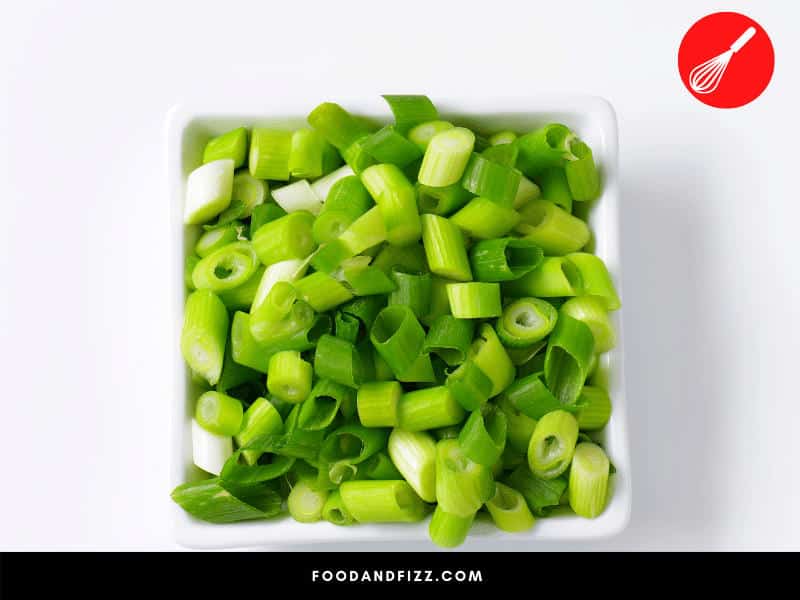
How Should I Store My Green Onions?
Using a Paper Towel
The paper towel approach to preserving your greens works best for plants without their roots ending intact. You can wrap the green onions in a damp towel and make the trip from the store to your home with fresh greens. Ensure the towel does not have excess water to avoid rotting.
You can wrap the dry onions in a dry paper towel and sprinkle some water on the towel. It will help avoid getting excess moisture into the wrapping towel. This storage approach will guarantee fresh onions for 2-3 weeks, provided you keep the towel moist.
Preserve in a Jar
Heavy-bottomed jars create the ideal environment to store your green onions. You can extend the shelf life of your green onions by up to three weeks by keeping them upright in your jar in the fridge. The approach only works for plants with their roots intact.
Pour fresh water into the jar and ensure it covers your plant’s roots. The container should be tall enough to prevent the leaves from falling over. You should place a bag over the greens before putting them in the fridge and practice regular water refills.
Window Method
In the right conditions, your green onions will grow. Their growth can continue for months, provided you regularly provide them with clean water. You can put your green onions in a jar and place them near a window to get plenty of light.
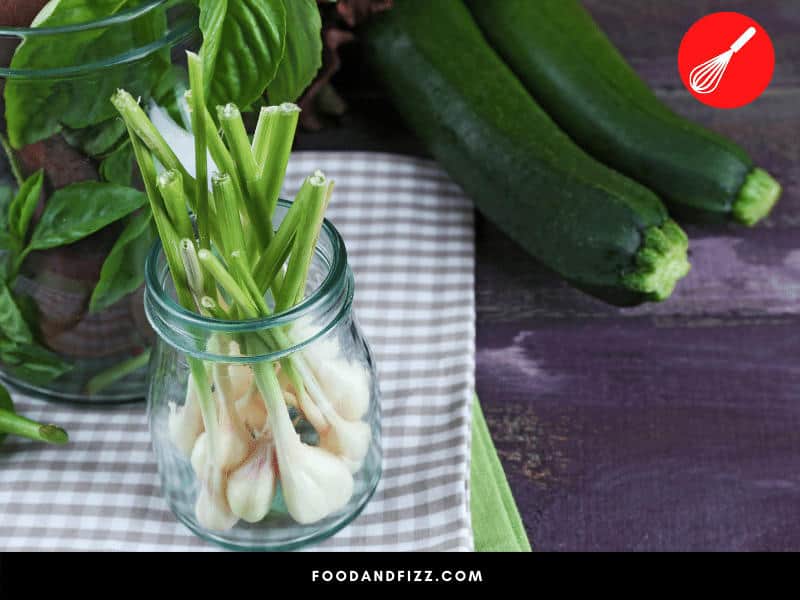
Is It Normal for Green Onions to be Slimy?
Not all green onions are slimy. The majority of slimy green onions are more mature plants that accumulate a slimy mucus coating on their internal walls as they grow bigger. It is a naturally occurring gel in green onions that has no adverse health effects when eaten.
What Does a Rotten Green Onion Smell Like?
The foul odor from rotten green onions is similar to a rotting composite. A sour decaying smell replaces the natural aroma of caramelization. It is nasty, irritating, and breath-taking pungent.
How To Cut Green Onions?
Your green onions are more potent if you chop them more finely. However, there are different techniques to cutting green onions, as discussed in this section.
- Whole green onions are ideal for scallion oil or grilling
- Cut into thirds, which are perfect where your onions are not the main dish
- Fried rice, noodles, and baked potato go better with bias chopped green onions
- Sliced lengthwise for steaming seafood
- Blended for when you want a smooth sauce
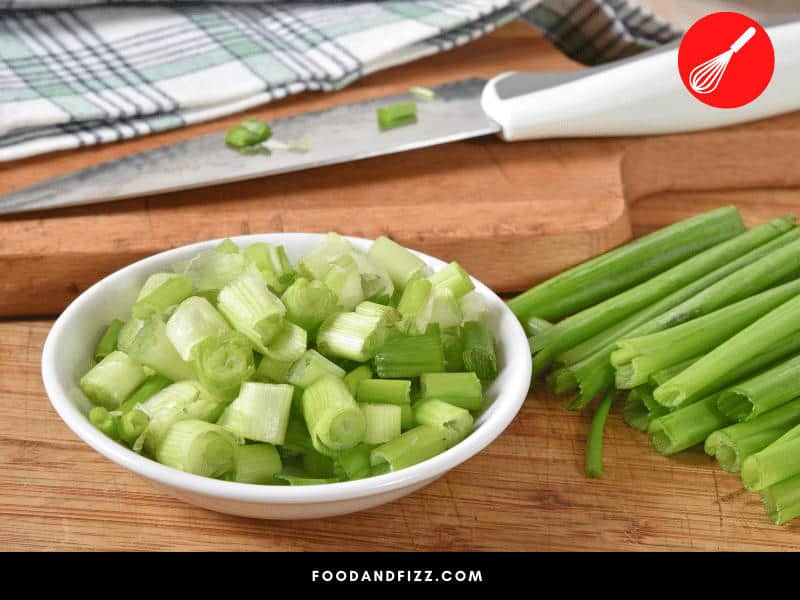
Conclusion to Slimy Green Onions
Slimy green onion is not always an indication of a plant gone bad. Before concluding, other elements like dry leaves or a foul smell should be investigated. Reading through our article will help you learn more about slimy green onions and their impact on the human body.
Frequently Asked Questions to Slimy Green Onions – Why? Safe to Eat?
Is it Safe to Eat Slimy Green Onions?
Slimy green onions are safe to eat unless it is accompanied by other signs pointing to food spoilage. Make sure to check for any signs of discoloration, for changes in texture inside the onion, or changes in smell.
Is it Normal For Green Onions to Be Slimy?
In the case of green onions, slime does not necessarily mean spoilage. Older plants tend to produce more mucus than younger plants, and as long as the slime isn’t caused by bacteria, it is normal and harmless to eat.

